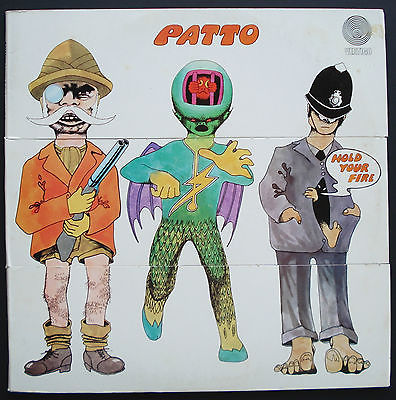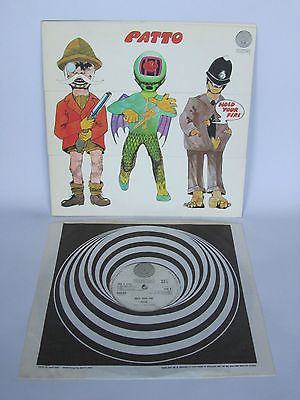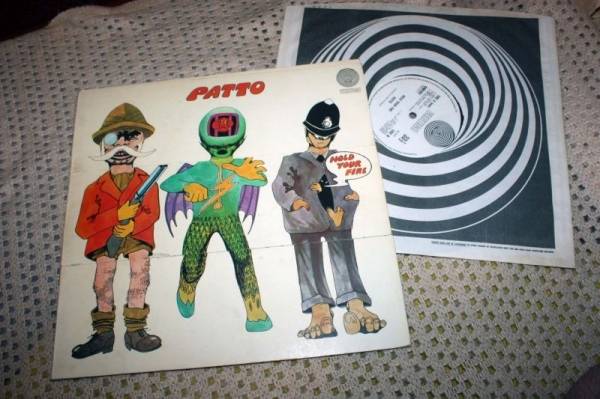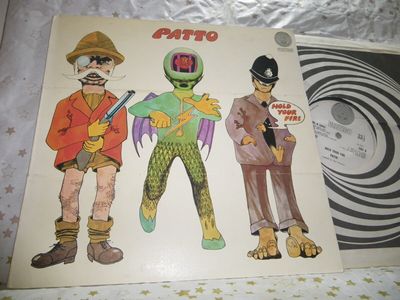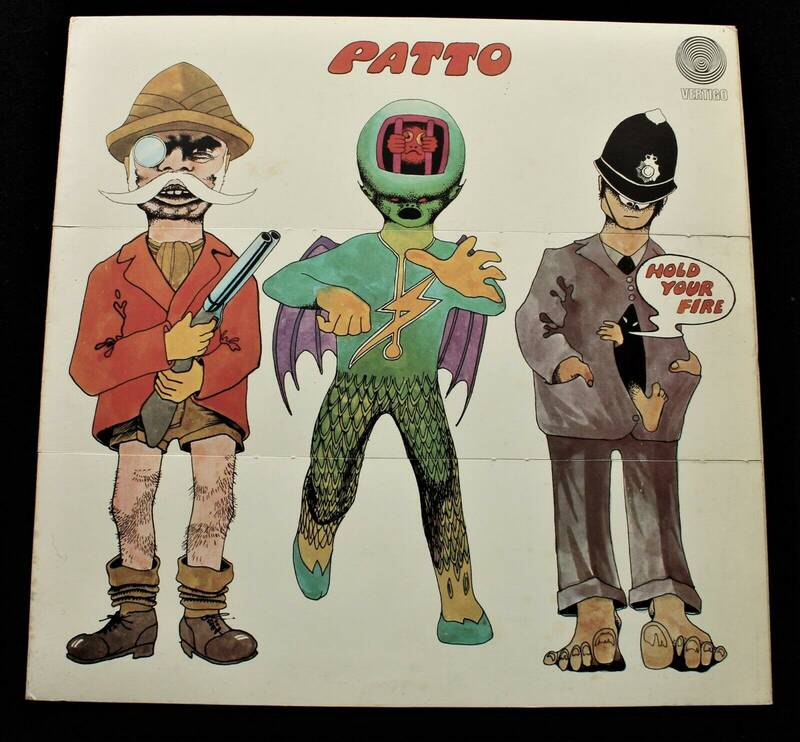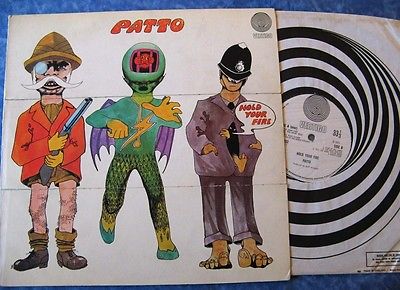Item Description
Satisfying Collectors Worldwide Since 1987 PATTO HOLD YOUR FIRE ORIG AUSTRALIAN 1st VERTIGO SWIRL PROG PSYCH LP WITH GIMMIX COVER You are bidding on the following item.
This is a 100 original AUSTRALIAN issue of the PATTO LP Hold Your Fire on the Vertigo SWIRL label.
Very rare issue from this country.
The record is clean and comes in the original un-laminated gatefold sleeve WITH THREE PART GIMMICK FRONT COVER.
Getting very hard to find these days.
If you are interested in similar items please check our other listings.
We have just got in a collection of VERTIGO LP s which includes many different pressings.
PLEASE READ ALL DESCRIPTIONS CAREFULLY BEFORE BIDDING.
Cat No: VERTIGO Records 6360 032 1971 .
CONDITION: Cover VG with light ageing and minor scuffs.
Corners and edges have very minor wear.
Hint of ring wear on the back.
Inside of gatefold is very clean.
Small price sticker residue on front.
THIS IS ONE OF THE BEST COPIES WE HAVE SEEN See pictures .
Record EXCELLENT with just a couple hairlines.
Plays great.
The labels are totally clean.
You are bidding on the item that is actually pictured.
See our other auctions for more rare collectable and interesting records.
Kept in storage in smoke free environment for several years.
Any questions please do not hesitate to contact us and bid with confidence.
WHEN IN MELBOURNE, COME AND VISIT VICIOUS SLOTH COLLECTABLES Records, CDs and Music Memorabilia Specialists.
1309 High Street, Malvern, Victoria 3144.
A shop full of rare and collectable vinyl in collectable condition Hours are: 10.00am to 6.00pm Monday to Friday Saturday 10.00am to 4.00pm ph: 03 9822 4992.
email: vsc bigpond.net.au PAYMENT TERMS: OVERSEAS BIDDERS HAVE 5 DAYS TO PAY FOR COMPLETED AUCTIONS.
AUSTRALIAN AUCTION WINNERS HAVE 3 DAYS TO PAY FOR COMPLETED AUCTIONS.
Postage is extra and at exact Australia Post rates as below an additional 3 P P for the custom made mailer.
AIR MAIL POST: 1 Kilogram Parcel.
AIR MAIL POST: Well packed mailer / parcel.
To Zone 8 -Argentina, Chile, Colombia, Israel, Luxembourg, Mexico, Peru, Uruguay, Venezuela and ANY OTHER COUNTRY NOT LISTED.
Aus 46.05.
To Zone 7 - Austria, Belgium, Bosnia, Brazil, Bulgaria, Craotia, Cyprus, Czech Republic, Denmark, Estonia, Finland, Greece, Hungary, Iceland, Macedonia, Malta, Montenegro, Poland, Portugal, Romania, Russian Federation, Serbia, Slovakia, Slovenia, South Africa, Turkey Ukraine.
Aus 43.40.
To Zone 6 - France, Germany, Ireland, Italy, Netherlands, Norway, Spain, Sweden, Switzerland the UK Aus 39.10.
To Zone 4 - The U.S.A.
Canada Aus 29.70.
To Zone 3 - India, Korea, Taiwan, Indonesia, Malaysia, Thailand, Singapore Vietnam Aus 26.50.
To Zone 2 Japan, China Hong Kong Aus 25.30.
To Zone 1 - New Zealand Aus 21.15.
Rates vary Within Australia.
Up to Aus 15.00.
Additional Options.
International Insured Post Aus 9.60.
International Registered Post Aus 7.00.
International Recorded Delivery Aus 3.85 Registered Post within Australia Aus 3.05.
We have dealt with record collectors and dealers on a professional level since 1987, and we are one of Australia s most reputable record dealers and traders.
All items are shipped in custom made, hard cardboard record mailers with excessive packing to protect your purchase.
We accept Paypal, Visa, Mastercard, American Express JCB, IMO in Australian only or bank transfer.
Please ask for any other options.
We have our own secure server which you can use to pay for your auction wins on-line.
Please e.mail if you have any other questions.
vsc bigpond.net.au 1309 HIGH STREET, MALVERN 3144, VICTORIA, AUSTRALIA Phone number: 61 3 9822 4992 Fax number: 61 3 9824 8716
